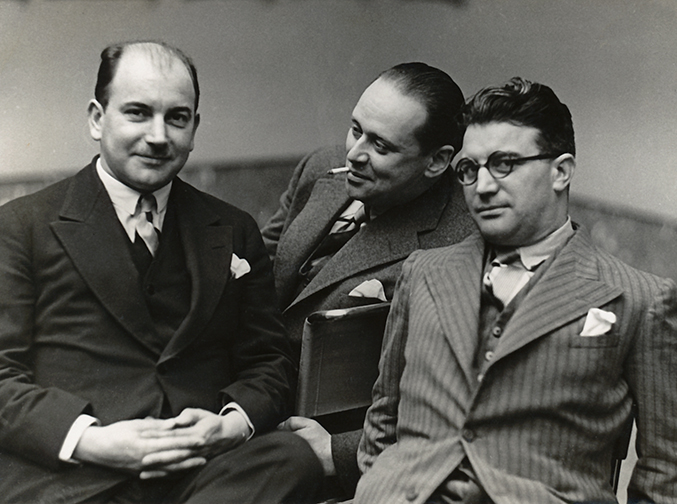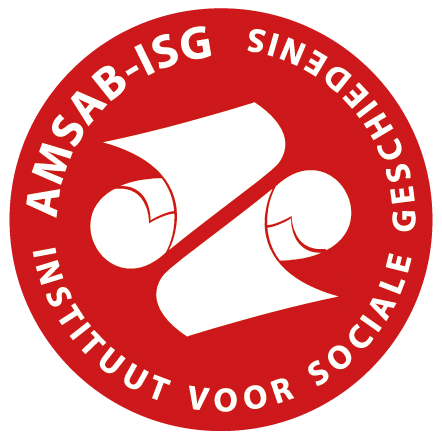Disséminée parmi diverses collections internationales, à l’image d’une existence qui les mena de Berlin à Bruxelles en passant par les États-Unis et Paris, l’oeuvre de Cami et Sasha Stone reste largement méconnue en dépit de l’importance de l’activité de leur studio durant l’entre-duex-guerres.
C'est pourquoi le Musée de la Photographie de Charleroi et Amsab-ISG de Gand ont uni leurs forces. Le résultat est Studio Stone, une exposition présentée à Charleroi du 1er février au 18 mai 2025, un catalogue et ce site web. En outre, pour les chercheurs et autres parties intéressées, une page séparée rassemble les travaux de Cami et Sasha Stone, accompagnés de métadonnées, si possible via IIIF.
Le Studio Stone, ou Atelier Stone, est né de l’association photographique du couple formé par la Belge Wilhelmine Camille Honorine Schammelhout, alias Cami Stone, et le Russe Aleksander Serge Steinsapir, alias Sasha Stone. Berlin est la ville de leur rencontre et ils y fondent leur studio en 1924. Si le nom de « Stone » est aujourd’hui quelque peu oublié, ils sont à l’époque reconnus parmi les meilleurs photographes de leur temps. Les journalistes et chroniqueurs parlent de leurs photographies en termes élogieux et les placent souvent à l’égal, voire au-dessus, de leurs homologues qui font aujourd’hui référence dans l’histoire de la photographie : André Kertész, Germaine Krull, László Moholy-Nagy, Albert Renger-Patzsch et même Man Ray, pour n’en citer que quelques-uns.
En 1920, le milieu photographique en plein bouillonnement trouve une expression nouvelle dans les courants d’avant-garde de la « Neues Sehen » (« Nouvelle Vision ») et de la « Neue Sachlichkeit » (« Nouvelle Objectivité ») nés en Allemagne. Le couple Stone fait partie intégrante de cette avant-garde, comme nombre de leurs relations à Berlin, Paris et Bruxelles.
Ils sont largement représentés dans les principales expositions de photographies « modernes » de l’époque. En 1929, à l’Internationale Ausstellung des Deutschen Werkbunds Film und Foto (FiFo) de Stuttgart, Zurich, Vienne et Berlin, Sasha est d’ailleurs l’un des photographes qui présentent le plus d’images au sein de l’exposition et de la publication qui l’accompagne. Pour l’Exposition internationale de la photographie organisée au Palais des Beaux-Arts de Bruxelles en 1932, les responsables de l’exposition, Claude Spaak et E.L.T. Mesens, demandent à Cami Stone d’être la déléguée belge. La place du couple au sein de l’accrochage est également importante puisqu’ils louent une salle entière pour y exposer leurs photographies. Parallèlement à ces expositions, leurs images sont abondamment publiées dans les magazines et journaux illustrés de l’époque.
Au début des années 1930, les Stone quittent la capitale allemande pour Bruxelles où ils ouvrent un nouvel atelier. Ils y poursuivent leur activité jusqu’à leur séparation en 1939. Ils continueront ensuite tous deux à pratiquer la photographie, Sasha sous le nom de « Sasha Stone, photographe d’art » et Cami avec la signature « Cami Schammelhout ».
Durant l’existence du studio, la classification et l’identification des tirages sont pratiquées et la majorité des photographies portent au verso un tampon indiquant « Atelier Stone », « Studio Stone », « Copyright Sasha Stone », « Copyright Cami Stone ». Ces indications ne peuvent cependant être considérées comme des attributions strictes à Cami ou Sasha. En effet, l’usage commercial du fonds, leur volonté de ne pas créditer toutes les images d’un nom précis, la séparation de l’ensemble au moment de la fin de leur activité commune et les remaniements postérieurs invitent à la prudence. De plus, il semble vain de tenter une attribution sur base stylistique tant est étroite leur collaboration artistique. Dans l’exposition et le catalogue, lorsque l’attribution est incertaine, la mention « Studio Stone » est indiquée. Si Cami ou Sasha est l’auteur certain de la photographie, son nom est repris dans la légende.
Se plonger dans l’œuvre des Stone mène à la découverte d’un très large panel de sujets photographiques : l’architecture, l’urbanisme, le nu, la photographie de spectacle, le portrait artistique et politique, ou encore le reportage social. Une place égale est conférée à ces productions diverses par les deux photographes, les publicités des Stone vantant à la fois la photographie publicitaire, industrielle, artistique ou le portrait d’enfant sans distinction qualitative. Après leur installation à Bruxelles, ils ne changent pas leur manière de travailler et continuent à traiter les mêmes thèmes que durant leur période berlinoise. Cette constance est visible également dans la qualité technique et esthétique de leurs images où l’usage de la légère plongée ou contre-plongée, le cadrage dynamique, la netteté des sujets et l’attention portée à la lumière caractérisent leur production.





